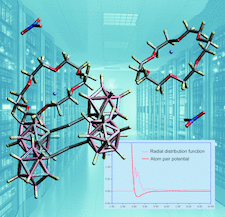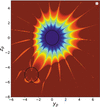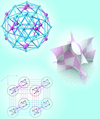issue contents
March 2023 issue

Cover illustration: Crystal structures have long been the main source of information about intermolecular interactions, which are central to many fields of material science including drug formulation and crystal engineering. Initially, the analysis of intermolecular interactions was of a statistical nature, for instance using radial distribution functions [as shown in light red for the Hg/NO3− pair in bis(μ5-nitrato)-(12-mercuracarborand-4)-bis(18-crown-6-potassium)], while now the modern algorithms of machine learning allow the underlying atom pair potentials (dark red) to be derived, as demonstrated by Hofmann & Kuleshova [Acta Cryst. (2023), A79, 132–144].
advances
research papers
 access
accessfoundations
research papers
 access
access access
accessshort communications
international union of crystallography


 journal menu
journal menu



























